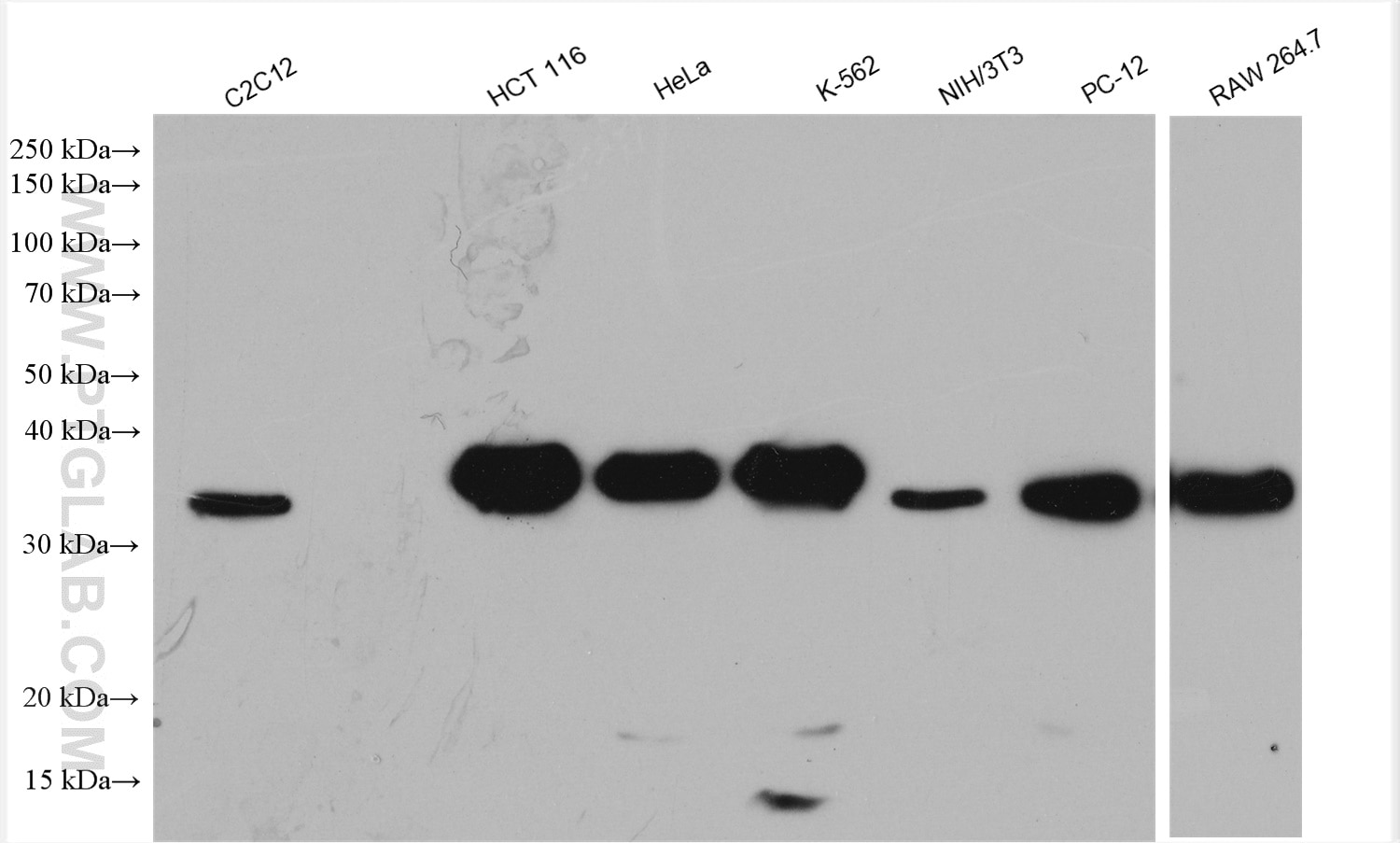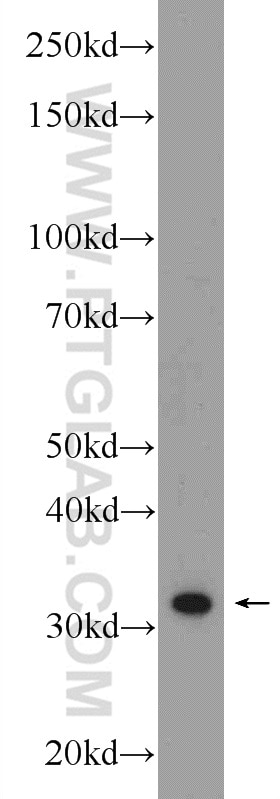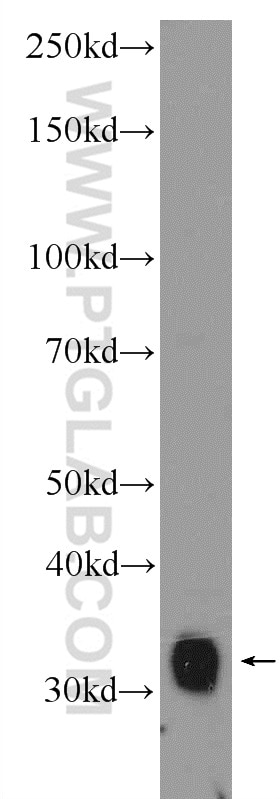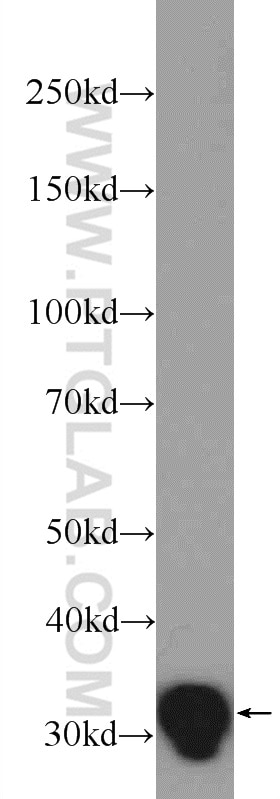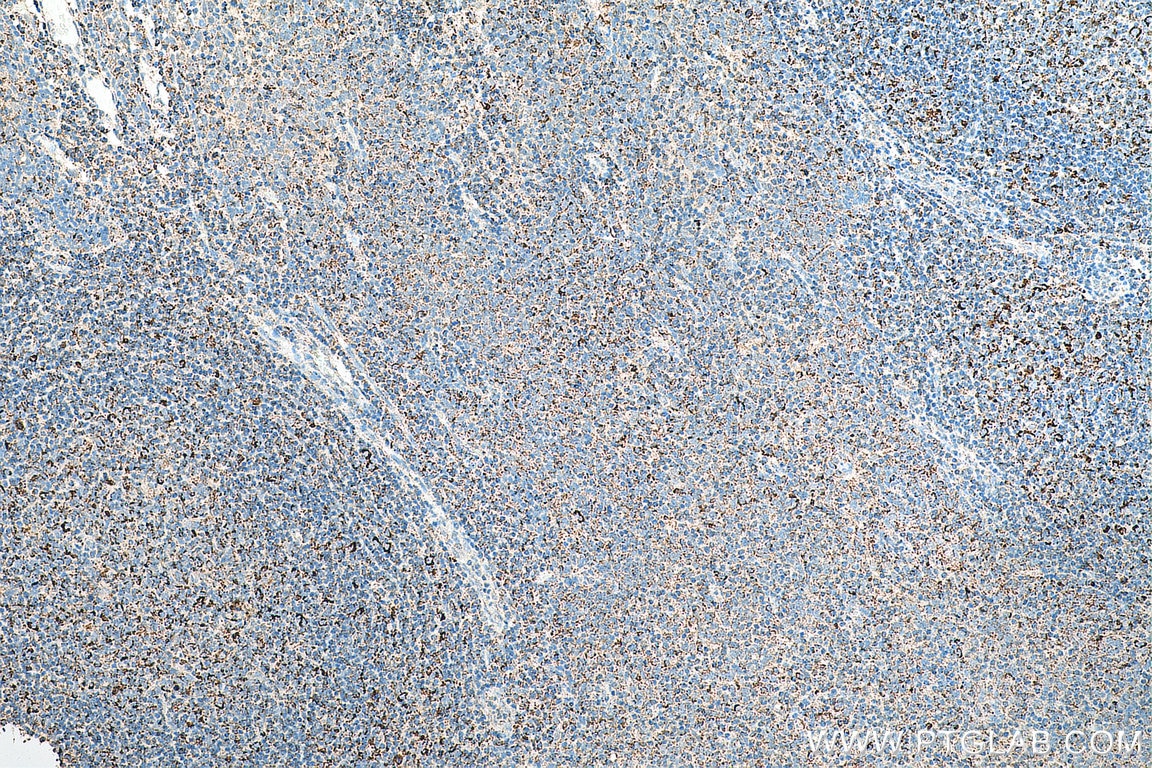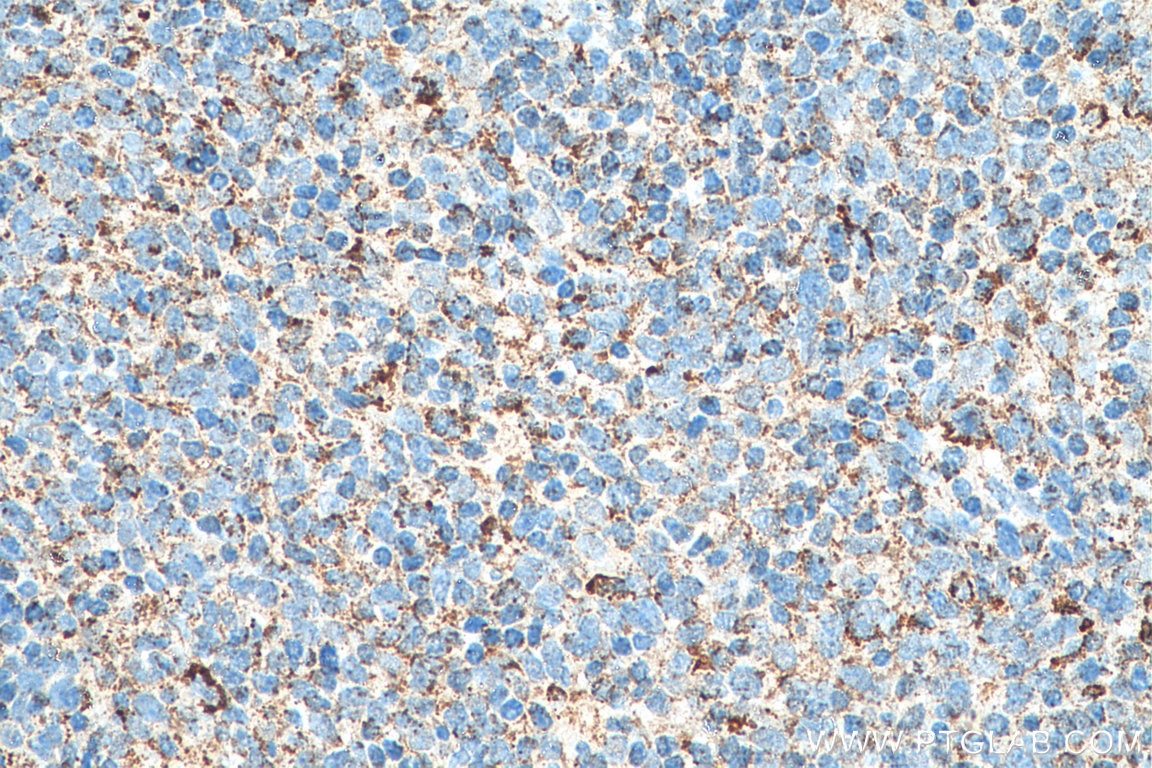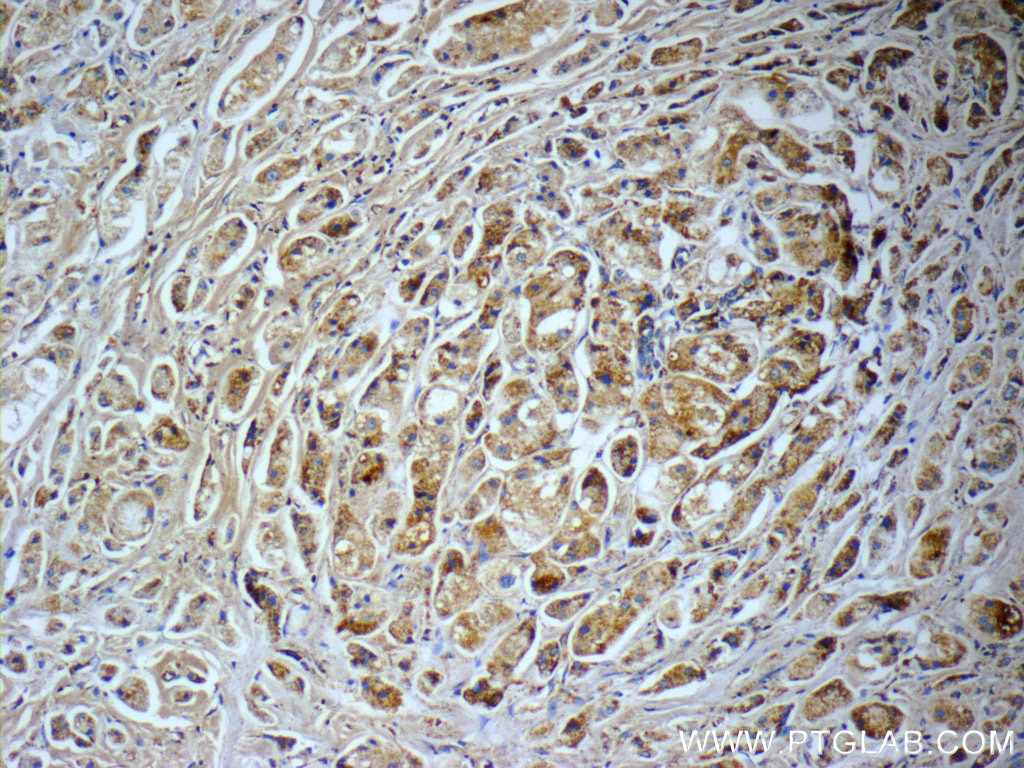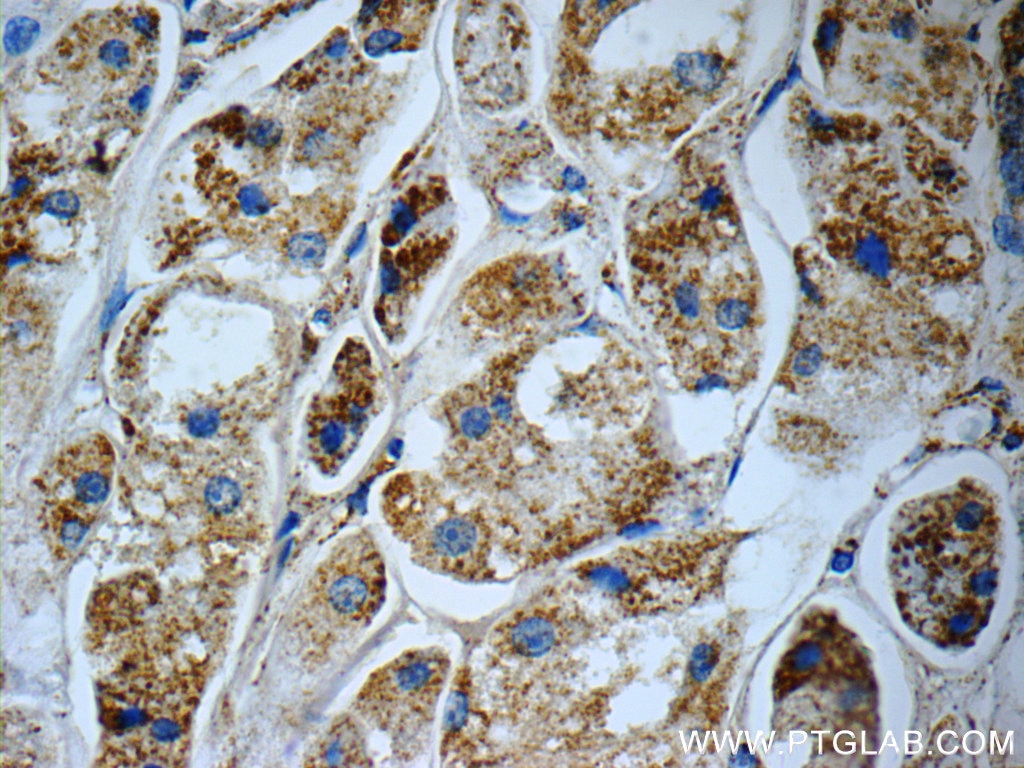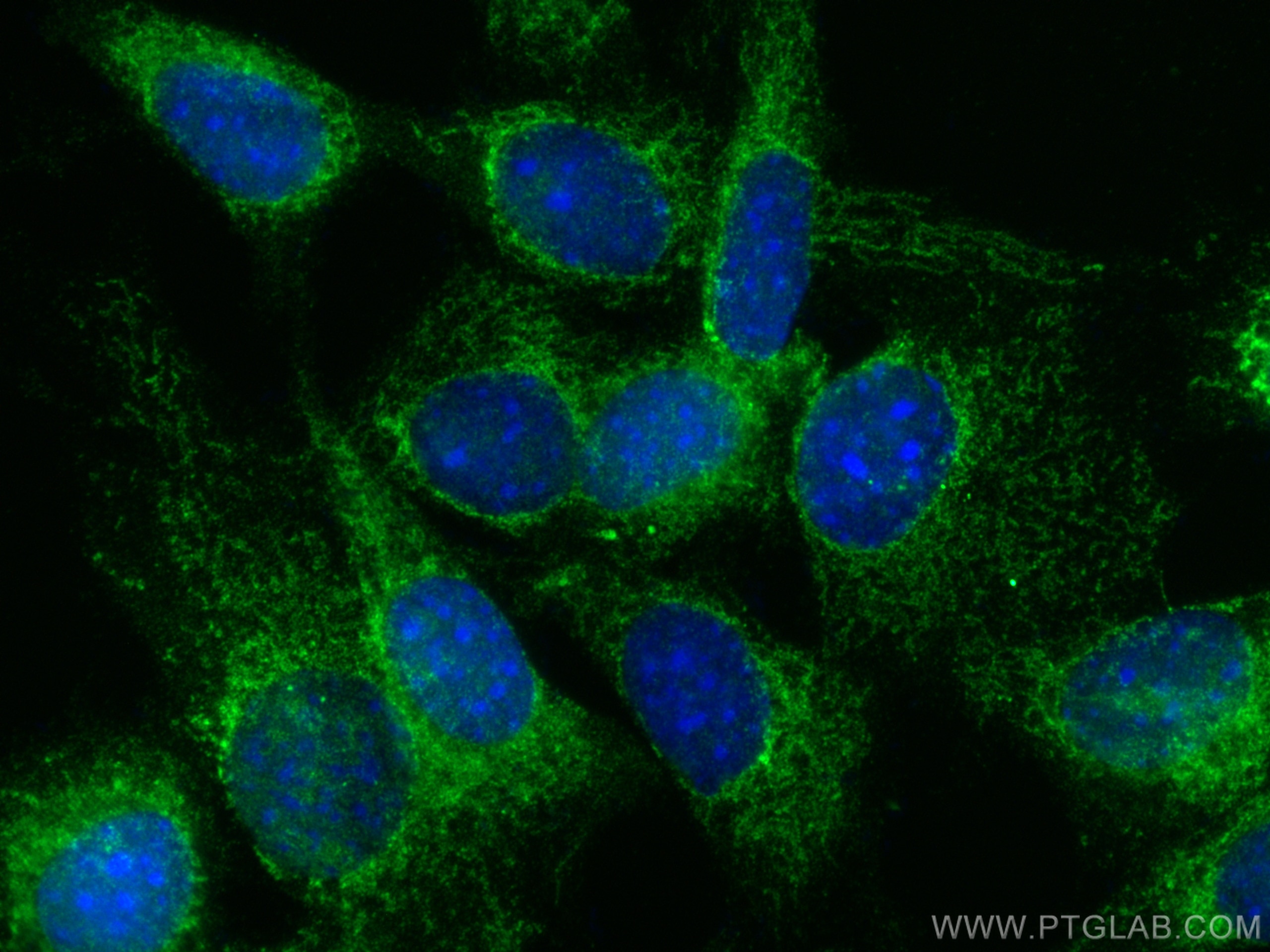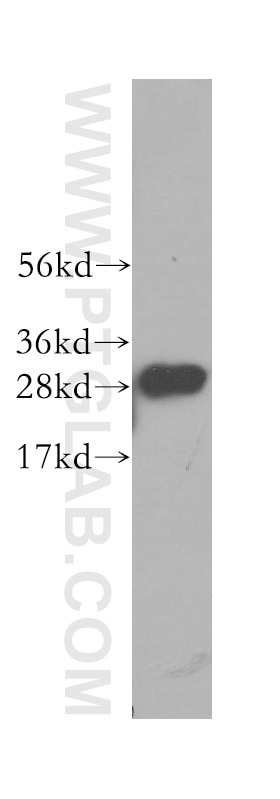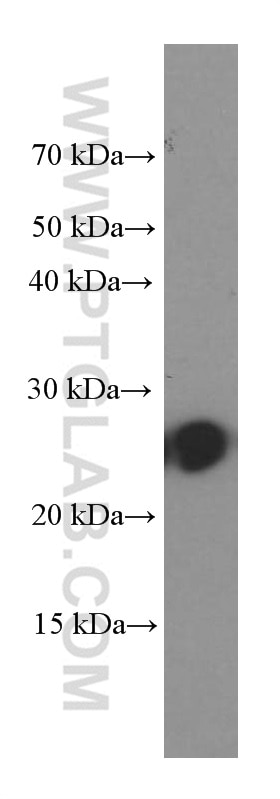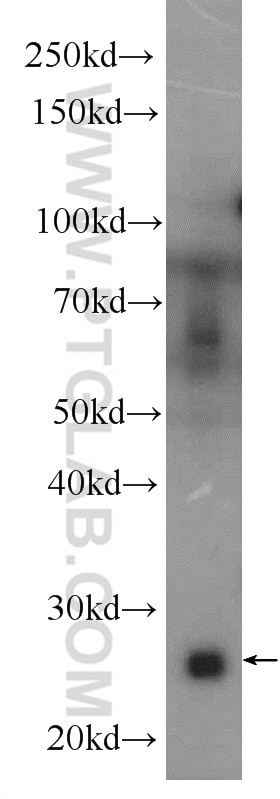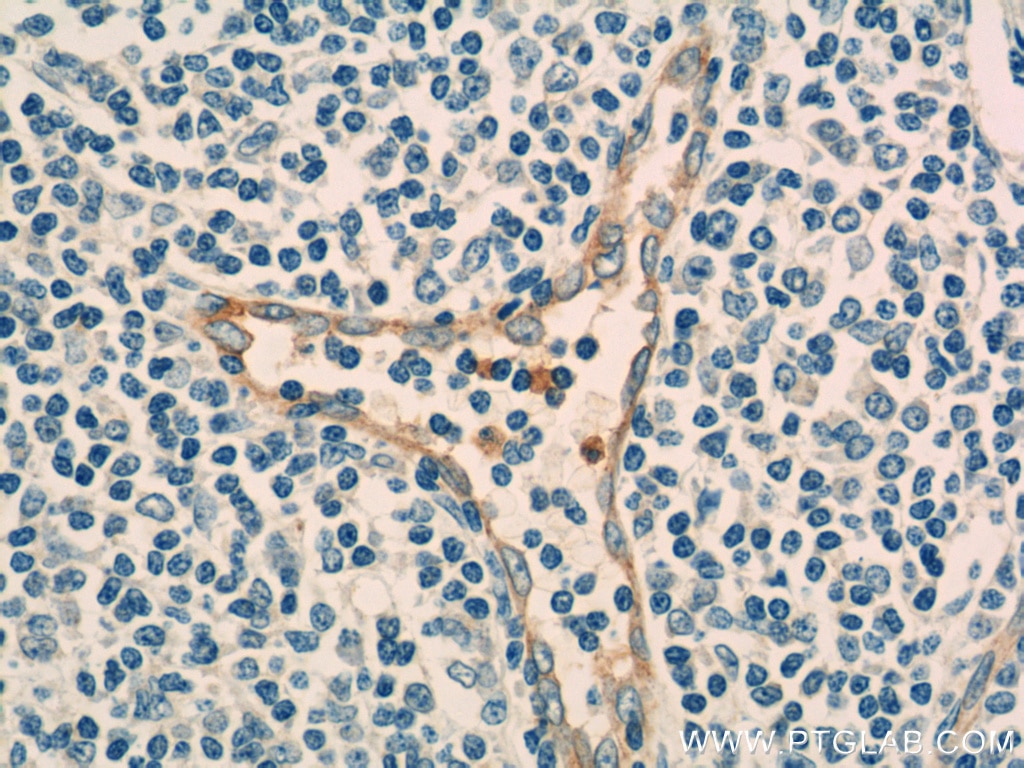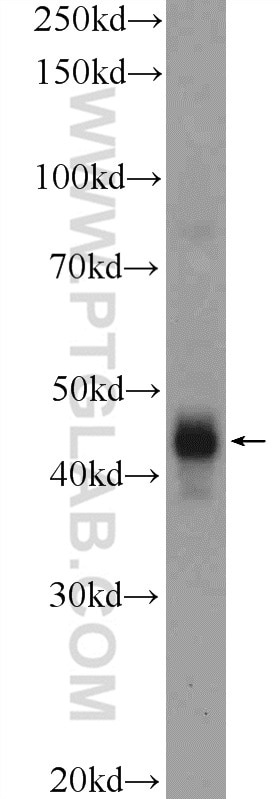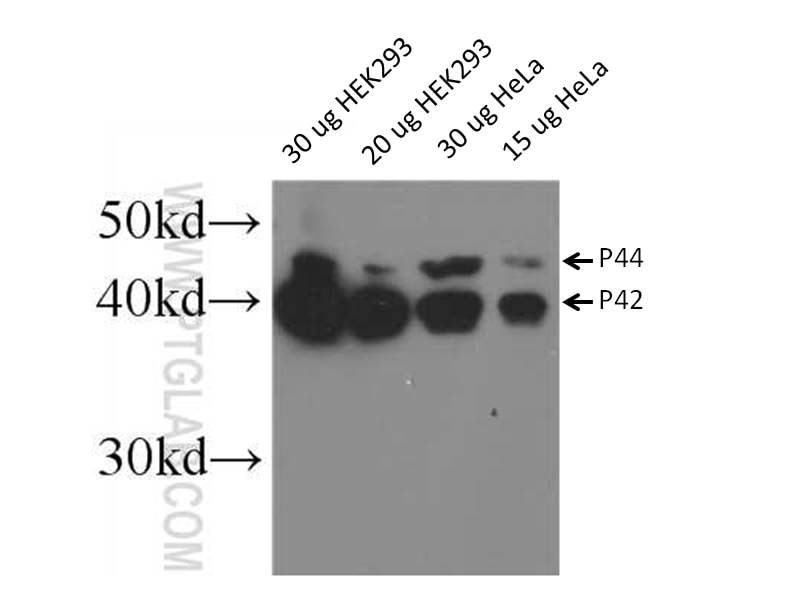- Phare
- Validé par KD/KO
Anticorps Polyclonal de lapin anti-C1QBP
C1QBP Polyclonal Antibody for WB, IF, IHC, ELISA
Hôte / Isotype
Lapin / IgG
Réactivité testée
Humain, rat, souris
Applications
WB, IHC, IF/ICC, ELISA
Conjugaison
Non conjugué
N° de cat : 24474-1-AP
Synonymes
Galerie de données de validation
Applications testées
| Résultats positifs en WB | cellules C2C12, cellules HCT 116, cellules HeLa, cellules K-562, cellules NIH/3T3, cellules PC-12, cellules RAW 264.7 |
| Résultats positifs en IHC | tissu d'amygdalite humain, tissu de cancer du sein humain il est suggéré de démasquer l'antigène avec un tampon de TE buffer pH 9.0; (*) À défaut, 'le démasquage de l'antigène peut être 'effectué avec un tampon citrate pH 6,0. |
| Résultats positifs en IF/ICC | cellules NIH/3T3, |
Dilution recommandée
| Application | Dilution |
|---|---|
| Western Blot (WB) | WB : 1:5000-1:50000 |
| Immunohistochimie (IHC) | IHC : 1:50-1:500 |
| Immunofluorescence (IF)/ICC | IF/ICC : 1:50-1:500 |
| It is recommended that this reagent should be titrated in each testing system to obtain optimal results. | |
| Sample-dependent, check data in validation data gallery | |
Applications publiées
| KD/KO | See 3 publications below |
| WB | See 6 publications below |
| IF | See 3 publications below |
Informations sur le produit
24474-1-AP cible C1QBP dans les applications de WB, IHC, IF/ICC, ELISA et montre une réactivité avec des échantillons Humain, rat, souris
| Réactivité | Humain, rat, souris |
| Réactivité citée | rat, Humain, souris |
| Hôte / Isotype | Lapin / IgG |
| Clonalité | Polyclonal |
| Type | Anticorps |
| Immunogène | C1QBP Protéine recombinante Ag19773 |
| Nom complet | complement component 1, q subcomponent binding protein |
| Masse moléculaire calculée | 282 aa, 31 kDa |
| Poids moléculaire observé | 32 kDa |
| Numéro d’acquisition GenBank | BC013731 |
| Symbole du gène | C1QBP |
| Identification du gène (NCBI) | 708 |
| Conjugaison | Non conjugué |
| Forme | Liquide |
| Méthode de purification | Purification par affinité contre l'antigène |
| Tampon de stockage | PBS avec azoture de sodium à 0,02 % et glycérol à 50 % pH 7,3 |
| Conditions de stockage | Stocker à -20°C. Stable pendant un an après l'expédition. L'aliquotage n'est pas nécessaire pour le stockage à -20oC Les 20ul contiennent 0,1% de BSA. |
Informations générales
C1QBP, also named as gC1q receptor (gC1qR), p32, p33, and hyaluronan-binding protein 1 (HABP1), is a protein initially copurified with splicing factor SF2 (PMID: 1830244). The protein is synthesized as a pro-protein of 282 amino acids (aa) that is post-translationally processed by removal of the initial 73 aa to a mature protein of 209 aa (PMID: 8262387). C1QBP is an evolutionary conserved and ubiquitously expressed multifunctional protein and has been reported to be a predominantly mitochondrial matrix protein involved in inflammation and infection processes, mitochondrial ribosome biogenesis, regulation of apoptosis and nuclear transcription, and pre-mRNA splicing (PMID: 28942965).
Protocole
| Product Specific Protocols | |
|---|---|
| WB protocol for C1QBP antibody 24474-1-AP | Download protocol |
| IHC protocol for C1QBP antibody 24474-1-AP | Download protocol |
| IF protocol for C1QBP antibody 24474-1-AP | Download protocol |
| Standard Protocols | |
|---|---|
| Click here to view our Standard Protocols |
Publications
| Species | Application | Title |
|---|---|---|
Blood C1Q labels a highly aggressive macrophage-like leukemia population indicating extramedullary infiltration and relapse
| ||
Proc Natl Acad Sci U S A A nucleolar long "non-coding" RNA encodes a novel protein that functions in response to stress | ||
J Control Release PSMA-targeted nanoparticles for specific penetration of blood-brain tumor barrier and combined therapy of brain metastases. | ||
Cancer Sci Complement C1q binding protein regulates T cells' mitochondrial fitness to affect their survival, proliferation, and anti-tumor immune function.
| ||
Int J Mol Sci The Expression Pattern of p32 in Sheep Muscle and Its Role in Differentiation, Cell Proliferation, and Apoptosis of Myoblasts.
| ||
Biol Pharm Bull Proteomic analysis reveals the renoprotective effect of Tribulus terrestris against obesity-related glomerulopathy in rats. |
Avis
The reviews below have been submitted by verified Proteintech customers who received an incentive forproviding their feedback.
FH Lana (Verified Customer) (08-13-2019) | SDS-PAGE: 15 ug/ul RIPA lysate of the mitochondrial fraction of HEK293t. 4-12% Bis-tris gradient gel.Transfer: Immobilon-FL transfer membranes (Millipore) O/N at 30V, 4C.Blocking: SEA Block Blocking Buffer 1h.Primary Ab: O/N incubation at 4C.Secondary Ab: IRDye 800CW Goat anti-Rabbit.
 |
